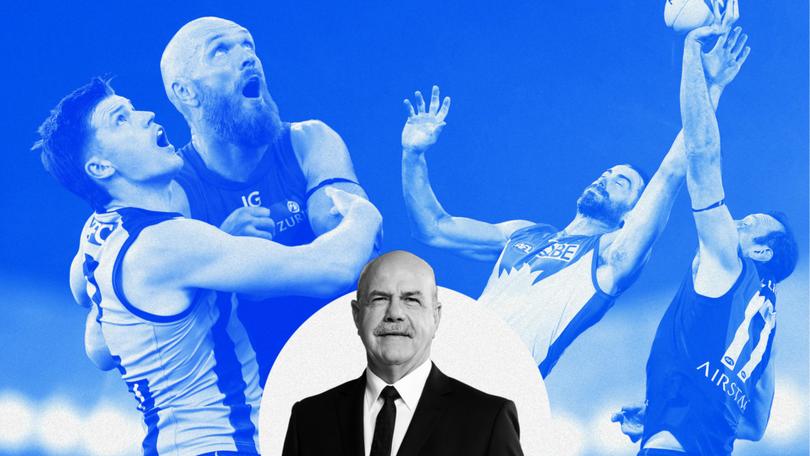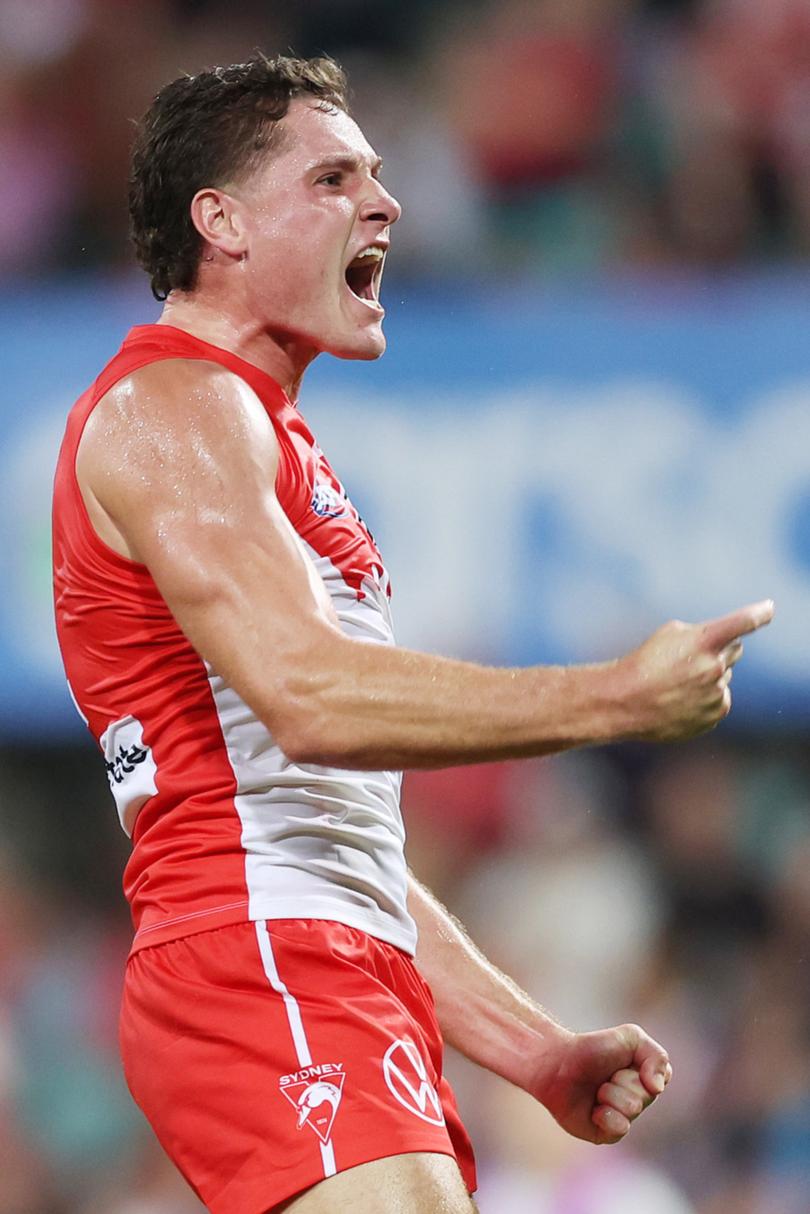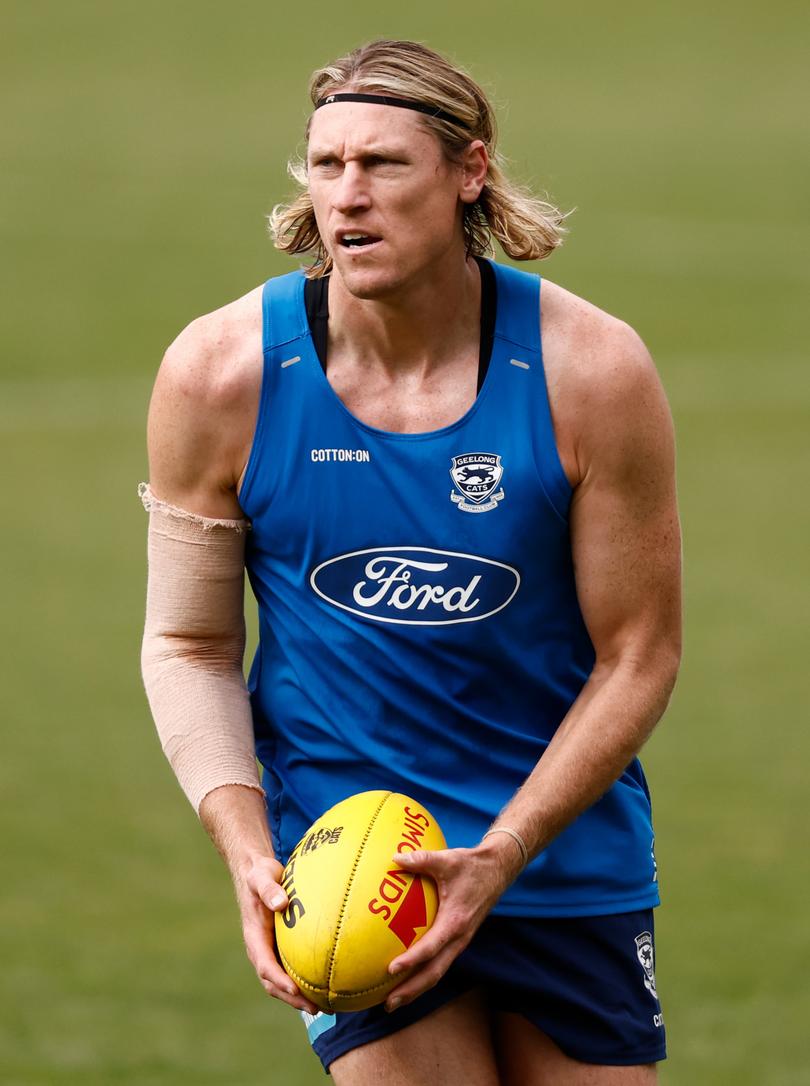LEIGH MATTHEWS: The AFL clubs getting the ruck combo right and those that don’t stand a chance

A few rounds into the 2024 AFL season and it has been fascinating to watch how coaches are approaching the challenge of whether to play one or two conventional ruckmen as part of their team structure.
Melbourne captain Max Gawn would be the king of that category, very good in the hit-out role and a strong contested marker around the ground.
However, even if they could clone big Max I doubt the Demons would benefit from playing two of him. That would significantly slow down the overall speed and run of the team.
Sign up to The Nightly's newsletters.
Get the first look at the digital newspaper, curated daily stories and breaking headlines delivered to your inbox.
By continuing you agree to our Terms and Privacy Policy.Raw hit-out stats usually mean very little although Gawn’s centre bounce ascendancy often hand-feeds his ground-level crew of Christian Petracca, Clayton Oliver and Jack Viney to get those handful of critical penetrating clearances out the front of the centre square.
But this is the exception to the rule. There are around 80 stoppages per game on average and the ruckman credited with the hit-out generally has little influence on the ground level take-away.
So very few teams go down the two-ruckman route.
Against Sydney last weekend Essendon took the punt and played two conventional big men Todd Goldstein and the returning from injury Sam Draper.
Probably the uncertainty of Draper being match-fit enough to play a full game was part of the equation that the Bombers weighed up.
With three good wins, the Swans have been one of the form teams of the competition with Brodie Grundy slotting seamlessly into the team as their new starting ruckman.
He has added an extra dimension with his competitiveness in the air coupled with the ability to get after the ball at ground level which assists Sydney’s clearance game immeasurably.

Draper in many ways plays with that similar combination and his contribution helped Essendon to lead the clearance count comfortably at half-time.
Interestingly, the Swans are using big key forward Hayden McLean as the “ruck partner’ of Grundy. It’s a role where McLean plays a support act to let Grundy rest and he has been highly effective in it. On the weekend, McLean took seven marks and kicked 2.2 as a forward and pinch hit in the ruck most effectively.
The balance of aerial work and ground-level grunt of the Swans’ ruck pairing was a pivotal part of the reason Sydney drew the clearances after half-time and produced an 11-goal match-winning second half.
Having a ruckman who can win groundball possessions and clearances is a big bonus and Grundy is exceptionally good in this department. However, the flexibility of having a back-up ruckman who is also an effective forward in McLean is proving to be a real strength for the Swans.
The back-up ruck function is very underrated. When the All-Australia selection committee picks its teams that role should be part of the 22 players selected.
Last year’s AA team had no back-up ruck option at all.
I have been very impressed with the emergence of McLean but the real hero in this space would have to be Geelong’s Mark Blicavs.
The ultimate utility, Blicavs is one of the most versatile players in the league and can be played on a wing, in defence and assist in the ruck. He has the dual ability to win the football in the air and at ground level.
Brisbane’s conventional ruckman is Oscar McInerney and they successfully use key forward Joe Daniher as his back-up. Daniher kicked 61 goals last season and was very unlucky not to be in the AA team.
This is another example of a valuable “dual ruck” set-up where there is a traditional ruckman supported by a more versatile option that can damage teams in other areas of the ground.

Collingwood lost again and are now 0-3 which is not the start they would have envisaged as reigning premiers a month ago. The Pies mostly use two traditional ruckmen in Darcy Cameron and Mason Cox. Both are ruckmen who fill in as key forwards.
The Fremantle Dockers have started the season with two wins and Luke Jackson has played two outstanding games as the sole ruckman for the team which will provide some headaches for the coaching staff when Sean Darcy returns from injury.
Traditional thinking has Darcy as the number one ruck and Jackson as a forward target who can be the relief back-up.
However, after his two outstanding matches in the midfield as a ruck who has gone forward and kicked goals just maybe Jackson is more valuable in his current role.
At 22, Jackson is still very young to carry the ruck load but is a fast-developing weapon who has the world at his feet.
Carlton is the ultimate example of a team that uses one conventional ruckman with versatile back-up options. Tom De Koning has been the Blues’ sole ruck option this season with tall midfielders Patrick Cripps and Matthew Kennedy filling in when De Koning has a spell.

St Kilda are employing a similar strategy. Rowan Marshall is their only ruckman but forward Mitch Owens often pinch hits to support in a comparable manner to how Carlton sets up.
The conundrum for coaches remains how to best structure their team to balance height and run from the available talent.
Deploying a lone ruckman frees up an additional spot on the field for a different positional player. This tactical flexibility can be invaluable, particularly in fast-paced games where rapid rotations and strategic adjustments are paramount and an effective back-up ruck who is versatile provides an advantage over two traditional ruckmen. By fielding an extra midfielder or forward, teams can gain a competitive edge in contested possessions, forward entries, and scoring opportunities.
This approach seems to be getting the best results.
Success in the AFL hinges on the ability to adapt and innovate in response to evolving challenges. Whether a team opts for one dedicated ruckman with a versatile back-up option or embraces the dynamic possibilities of a two traditional ruckman system, the key lies in maximising and capitalising on the strengths of the players available.
While coaches will always grapple with the concept that best suits your team, one thing remains clear to me.
Finding a McLean, Blicavs or Daniher to be the back-up ruck will be increasingly valuable as the frantic speed of the game demands the selection of the hardest running group that a team can field.
